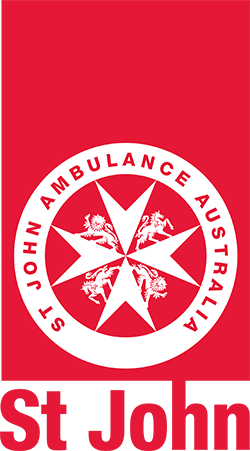Course Overview
Our Promise
We are confident in the delivery of our training. On successful completion of the course, graduates will be guaranteed a telephone interview for vacant Patient Transport Officer positions in the Non-Emergency Patient Transport division.
So far we have employed 100 graduates of this course into our Non-Emergency Patient Transport division at St John as Patient Transport Officers.
Who's It For?
The Certificate III in Non-Emergency Patient Transport is ideal for individuals seeking a rewarding career in the Patient Transport industry. This course is suited for:
- Aspiring Patient Transport Officers: Those wanting to assist patients who require non-urgent transport.
- Potential Career Changers: People looking to transition into the healthcare and patient transport sectors.
- Passionate People: This qualification is perfect for those with a passion for helping others and an interest in providing safe, compassionate care for patients with low to medium acuity needs.
Campus Locations
What You'll Learn
In the Certificate III in Non-Emergency Patient Transport, you will gain the skills and knowledge to make you job ready to work in providing transport services to patients who require non-urgent medical attention. Key areas of learning include:
- Patient Assessment and Care: Learn how to assess and monitor the condition of patients with low to medium acuity.
- Safe Transport Practices: Develop the ability to safely transfer transport patients using stretchers and wheelchairs.
- Communication Skills: Enhance your ability to communicate effectively and empathetically with patients, healthcare professionals, and their family members.
- Medical Terminology: Gain an understanding of key medical terminology and concepts necessary for working alongside other healthcare professionals.
- Basic Clinical Procedures: Learn how to assist patients with basic clinical procedures, including administering oxygen therapy and using Automated External Defibrillators (AEDs) in emergency situations.
Recognition

Study Method
- BlendedBlended delivery - both online course content and partial face to face requirements
- In-classIn class delivery - predominately face to face course content conducted at a specific location
- OnlineOnline delivery - online course content with the exception of assessments and work placement
- VirtualVirtual Delivery - Live and interactive classroom-style learning conducted completely online
Locations


- Victoria
- Melbourne
Duration and Study Load
- Six months
- 19 days of face-to-face workshops delivered 1 day per week at one of our training facilities
- Start dates are:
- Tuesday 21st January 2025
- Thursday 13th February 2025
- Monday 17th March 2025
- Wednesday 2nd April 2025
- Tuesday 22nd April 2025
- Monday 19th May 2025
Delivery
This course consists of nineteen (19) workshops of face-to-face training which includes eight (8) placement shifts (available on Tuesdays to Fridays) with St John. Students are also required to complete self-paced workbooks, and self-guided learning.
Students are given six (6) months from course commencement date to complete the course. For Face-to-face sessions, observation shifts and simulated training, students will be required to attend one of our training facilities.
Entry Requirements
To commence this course, you are required to have:
- Full driver’s licence or green P plates (Red P and L plates not accepted)
- Current working with children check
- Current Police check
- Students must have a laptop or tablet which is wi-fi enabled
- Proof of vaccinations for COVID-19 (fully vaccinated), current Influenza (within the last 12 months), Hepatitis B, Varicella, Pertussis, Measles/Mumps/Rubella, with serology report (required before commencing observer shifts)
Recognition of Prior Learning
The Certificate III in Non-Emergency Patient Transport offers pathways for Recognition of Prior Learning (RPL) and Credit Transfer, allowing you to fast-track your qualification based on your previous experience and education.
Recognition of Prior Learning (RPL)
If you have prior work experience or have developed skills relevant to patient transport or healthcare, you may be eligible for RPL. This process assesses your existing knowledge and skills against the qualification requirements, reducing the time and study needed to complete the course.
Credit Transfer
If you have previously completed formal qualifications or units of competency that are relevant to this course, you may be eligible for credit transfer. This allows you to receive credit for units you’ve already completed, eliminating the need to repeat learning.
Assessment
A successful outcome for this certificate will be determined by a range of different assessment methods including written assessment (questionnaire), observation of simulated and practical activities etc. You will be required to demonstrate CPR on a manikin on the floor.
Additional Information
Patient Transporter Job Duties generally include
Patient Transportation:
- Assist patients in and out of ambulances, cars, and helicopters.
- Lift patients on and off beds, and move them to and from specific areas such as treatment rooms, service areas, or operating rooms.
- Use wheelchairs or movable beds to ensure safe patient transport.
Patient and Family Support:
- Provide comfort and reassurance to patients and their families.
- Be punctual and attentive to schedules, ensuring procedures start on time.
- Demonstrate care and cultural sensitivity to patients’ needs.
Transporting Equipment and Supplies:
- Pick up and deliver requisitioned medical supplies and equipment to assigned treatment and patient care areas.
- Collect laboratory specimens and deliver them to the designated laboratory in a timely manner.
Ensuring Safety and Compliance:
- Maintain a safe, secure, and healthy work environment by adhering to healthcare standards and procedures.
- Comply with federal and state regulations as well as Joint Commission on Accreditation of Healthcare Organizations (JCAHO) requirements.
Subjects
About St John Ambulance Australia
As one of the largest training providers training over 400,000 students nationally per year, St John is also a not-for-profit, operating for over 141 years. Our mission is the service of humanity, and we aim to deliver the best student experience possible and be a place where people are inspired to learn, volunteer and work. We support our charitable work through a strong and diversified commercial operation, which includes Training, Event health services, Non-emergency patient transport and the sale of First Aid products.
St John Ambulance (VIC) delivers nationally recognised training and assessment on behalf of St John Ambulance Australia (RTO 88041)

